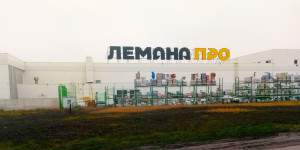

deep insights, facts & figures

The Polish market proved robust in the financial crisis. While it is still continuing to grow, concentration is also increasing
Although Poland is one of eastern Europe’s well developed retail markets, the DIY market is relatively difficult to record statistically, since too few details can be gleaned from the official statistics. But of course there are some pretty exact clues to be had, simply because of the strong presence of big international chains and their key figures. Mintel, a British market research company, estimates the 2010 sales volume of all the DIY retailers operating in Poland at around PLN 17 bn, or approx. € 3.9 bn. That would be an increase of around eight per cent on the previous year. The Polish economy, and the retail sector with it, survived 2009, the year of crisis, in a relatively sovereign manner. Admittedly, retailers’ sales did not again touch the growth figures reached in the three preceding years: 6.0 per cent, 4.9 per cent and 8.8 per cent (2008). However, the sector’s 3.5 per cent increase meant that it was far better off than colleagues in many other countries, not only those just across the border. Last year saw a continuation of the process of recovery. It is estimated that the retail sector recorded a 4.5 per cent sales increase – a rate of growth that Mintel believes will continue on this scale until 2015. The market researchers forecast several more good years for the DIY sector as well. The Polish market, by reason of its sheer size and the comparatively reasonable costs of employment and real estate, is rated as attractive to international trading groups. Moreover, there is a continuing backlog of demand in the housing market, even though the building trade also saw growth in 2009. However, the devaluation of the zloty has caused problems, precisely for the international companies. This has not been able to affect the trend towards greater concentration in any way. The five major DIY chains account for more than 75 per cent of sector sales. Market leader Kingfisher alone claims around 32 per cent of sales with its two trading formats, Castorama and Brico Dépôt (based on the 2009 sales estimate). The French Adeo Group achieves 24 per cent with its Leroy Merlin and Bricoman chains, while the stores belonging to Obi, market leader in neighbouring Germany, take care of another eleven per cent. The market shares of Bricomarché of France and Praktiker of Germany, along with the local operators Mrowka and Nomi, are positioned in the single-digit percentage range. Download:
Related articles
Read also

 Menü
Menü











 Newsletter
Newsletter